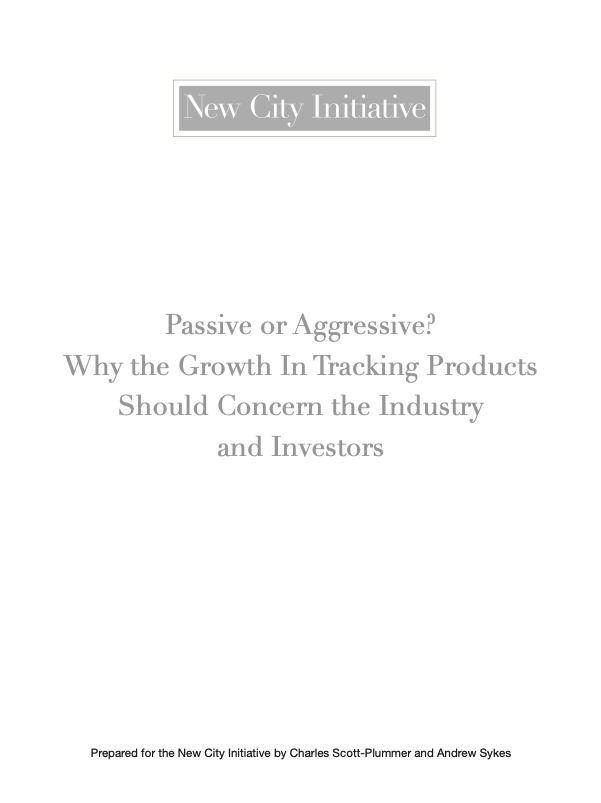The explosive growth of Exchange Traded Funds (ETF) over the last decade is the latest in a long line of financial innovations to come out of the investment banks who, over the last five years, have seen many of their traditional revenue streams evaporate. Behind these apparently simple, easy and cheap financial vehicles there are armies of traders employed in their ‘construction’. It would not be too far from the truth to say that swaps, futures and stock lending departments now rely for their very existence on the increasing appetite for the ETF.
The purpose of this short note is to point out the downside of this latest of financial innovations. The marketing and lobbying muscle of the investment banking fraternity has been extremely effective at highlighting the advantage to investors of the ETF. The potential downsides of these instruments are less often heard.
Since Jack Bogle launched the First Index Investment Trust in 1976, assets in tracking products have grown from just $11 million to over $1.5 trillion today. Whilst these funds initially focused on equity indices such as the S&P 500, there has recently been an explosion of products in more esoteric and illiquid markets, with ETFs accounting for a large proportion of this growth (ETF AUM has increased by 40% p.a. over the last decade). Investors can now buy ETFs in anything ranging from agricultural commodities to one providing leveraged exposure to volatility.
The growth of ETFs has been embraced with relish by the financial services industry and such products now constitute a highly profitable earnings stream. For investment banks, profit margins on ETFs are significantly higher than on traditional actively managed products. Beyond management fees, issuers make extra profits through securities lending, swap origination and futures sales. The high profitability of ETFs creates a powerful incentive for issuers to continue aggressively expanding the number of markets and assets that ETFs purport to track, regardless of whether this is to the benefit of investors and securities’ markets in general.
Good ideas taken too far would be an apt summary of the history of financial innovation. While the ability of investors to gain exposure to a broad array of asset classes at a low cost should be seen as a positive development, the enormous increase in both the scale and scope of ETFs brings with it a number of dangers, which need to be considered by both investors and regulators. Such dangers affect both broader market participants in the form of higher volatility and higher stock correlations, as well as higher valuations of indexed stocks. Investors in ETFs are also exposed to counterparty risk and in certain asset classes, returns far below those of the underlying assets.

